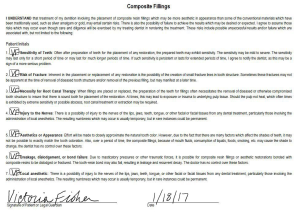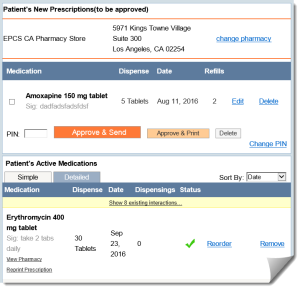Understanding Risk from a Clinical Perspective
Posted January 24, 2017 by Dawn
Whether you’re just getting started or a seasoned vet, every dentist has heard the phrase “If it’s not in the chart, it didn’t happen.” And, even though we’ve all heard it before, many dentists continue to repeat the bad habits of their predecessors, leaving themselves at risk for malpractice lawsuits and fraud. In today’s blog, we’ll explore the clinical aspects to risk management in the dental office.
The Dental Chart
In order for the dental chart, or electronic dental record, to be defensible in a court of law, it needs to provide a consistent and detailed account of events. Let’s look more closely at some of the key components to the dental chart and ways to safeguard your practice.
Health History
While most practices are good about obtaining health history information at the time of a patient’s initial visit, many fail to maintain consistency when it comes to updating information. With a lot of dentists counting on hygienists and assistants to update health history information, it’s easy to get lazy with your review of this information. Never assume that your hygienist or assistant will tell you about important changes. Make it a habit to review the information in your electronic dental record prior to each patient encounter and document this in your clinical progress note. The recent addition of the Medical Tab in the XLDent chart helps clinicians view and update medical conditions and medications easily.
Pre-Treatment Diagnosis
Failure to document a definitive diagnosis is a common weakness to the electronic dental record in many practices. The clinical progress note should reflect your diagnosis and the findings that led to your diagnosis. Supporting items, like radiographs and treatment plans, will also help strengthen and validate your progress note. Additionally, your documentation must reflect the treatment options that were recommended and alternatives that were discussed with the patient.
Informed Consent
 Prior to treatment, the dentist bears the responsibility of obtaining informed consent from the patient to perform the procedures that were diagnosed. For most, the process to obtain consent involves a conversation with the patient that results in patient understanding and acceptance of the treatment that will be provided. When it comes to malpractice claims, lack of consent is frequently cited. At a minimum, the clinical progress note should reference the process used to obtain consent and that the patient consented to the treatment provided. For riskier procedures, consider obtaining consent in writing to help support your clinical note. One such method is clinical consent forms that are signed on the tablet pc when using XLDent’s Ink Forms.
Prior to treatment, the dentist bears the responsibility of obtaining informed consent from the patient to perform the procedures that were diagnosed. For most, the process to obtain consent involves a conversation with the patient that results in patient understanding and acceptance of the treatment that will be provided. When it comes to malpractice claims, lack of consent is frequently cited. At a minimum, the clinical progress note should reference the process used to obtain consent and that the patient consented to the treatment provided. For riskier procedures, consider obtaining consent in writing to help support your clinical note. One such method is clinical consent forms that are signed on the tablet pc when using XLDent’s Ink Forms.
Medications
 Even in 2017, many prescribers will be the victim of prescription theft or tampering. Sending prescriptions to the pharmacy electronically offers greater protection for the prescriber, reducing the risk of fraud. Additionally, ePrescribing software offers safety measures for the patient. When creating a prescription electronically, ePrescribing software will alert you of drug interactions caused by allergies or other medications.
Even in 2017, many prescribers will be the victim of prescription theft or tampering. Sending prescriptions to the pharmacy electronically offers greater protection for the prescriber, reducing the risk of fraud. Additionally, ePrescribing software offers safety measures for the patient. When creating a prescription electronically, ePrescribing software will alert you of drug interactions caused by allergies or other medications.
We hope these recommendations will help you minimize the risk of fraud or error in your clinical settings. If you found this information helpful, be sure to check out Part II of our risk management series next week as we look at the role infrastructure technology plays in managing risk.

 Subscribe
Subscribe Subscribe
Subscribe



